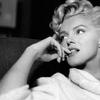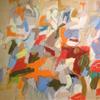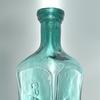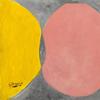'Virtual Village' - Jackson Pollock, Willem de Kooning, and Virginia Admiral Among Artists Spotlighted in NYC Educational Tourism / Preservation Campaign
- NEW YORK, New York
- /
- November 04, 2020

Village Preservation has announced the launch of “Virtual Village,” an interactive online tool that offers free, guided walking tours of the many historic and cultural riches hidden in New York's “South of Union Square” area, where Greenwich Village meets the East Village, in order highlight the need to preserve these historic sites by granting them landmarking protections.
Virtual Village has nearly 40 tours that invite users to explore the South of Union Square area, which roughly encompasses Third to Fifth Avenues between 9th and 14th Streets, with its unique concentration of rich New York and American history that includes a mashup of commerce, art, architecture, politics, literature, industry, African-American and LGBQT activism, and music, from punk to classical.
“The area South of Union Square is an important piece of New York’s DNA, yet because it almost entirely lacks landmark protections, its history and great historic buildings are being lost every day,” said Andrew Berman, Executive Director, Village Preservation. “We hope that this tool will bring increased awareness to the critical need to preserve these sites, which for nearly two centuries have made our city a unique, vibrant, and progressive cultural hub and incubator of enormous national and global influence.”
Village Preservation, a group dedicated to preserving the historic, architectural and cultural fabric of Greenwich Village, East Village and NoHo in Manhattan, launched their campaign to seek landmark protections for the South of Union Square area in 2018, after it faced increasing threats of demolition and out-of-scale new development stemming in large part from the tech industry.
The Virtual Village’s historical walking tours highlight almost 200 buildings in the area including:
- 70 Fifth Avenue (13th Street)—This 1912 Beaux Arts style office building housed the headquarters of the NAACP, the nation’s oldest and largest African American civil rights organization, from just after its founding in 1914 until ca. 1925. Here the NAACP began their anti-lynching campaigns, including introducing legislation still being debated today, began flying their “A Man Was Lynched Yesterday” flag, and launched campaigns against discrimination and segregation. The Crisis, the first magazine ever published for a black readership, was also started here, edited by W.E.B. DuBois and featuring the early works of Langston Hughes, Countee Cullen, and Zora Neale Hurston.
- 55 Fifth Avenue (12th Street)—The 1912 neo-Renaissance style office building housed the Columbia Phonograph Recording studios in the 1920s and 30s, where producer and civil rights activist John Hammond created some of the first integrated musical recordings, and Billie Holiday made her first recordings. Iconic feminist, LGBT, and African American blues singer Bessie Smith also recorded here, and W.W. Norton & Co. published the seminal feminist text The Feminine Mystique while headquartered in the building.
- 49 East 10th Street—Built in 1851-52, this Italianate style row house was home to famed abstract expressionist Jackson Pollock when he was a still-unknown painter. During his time here around 1931 Pollock began to set up his art for sale on a sidewalk near Washington Square Park, which birthed what is today known as the Washington Square Outdoor Art Exhibit. In 1934, The Artists and Writers Dinner Club, a Depression-era group that provided nightly dinners to destitute people in the arts, was also located here; members included artist John Sloan, one of Pollock’s teachers and mentors.
- 10 East 14th Street—In 1894, this cast-iron structure was the headquarters of the New York City Woman Suffrage League, an organization at the forefront of the women's voting movement in New York State. Chosen for its prime location in the midst of a high-end shopping district where the League could court support from wealthy New York women, this building became the nexus of the early suffrage movement. It was from here that the Constitutional Amendment Campaign was launched to change the New York State Constitution to give women the right to vote, and just blocks away the League held rallies with pioneering women’s rights activists like Elizabeth Cady Stanton.
- 80 Fifth Avenue (14th Street)—This 1908 Renaissance Revival style building housed the original headquarters of the National Gay Task Force (now the National LGBTQ Task Force), the first and oldest national LGBT rights organizations, from its founding in 1973 until 1985. While located here the Task Force won groundbreaking campaigns including ending prohibition on the employment of gay and lesbian people in the federal government, removing homosexuality from the American Psychiatric Association’s list of mental illnesses, getting legislation introduced that extended civil rights and hate crimes protections to gay and lesbian people and ending the ban on LGBT service in the military. The building also housed the headquarters of the International Workers Order (IWO) from 1930 to 1954, a mutual benefit fraternal organization which led trailblazing campaigns against Jim Crow and discrimination against Jews and immigrants, fighting for integration in professional sports and the workplace.
- 814 Broadway—Built in 1854, this building has played a significant role in several periods of American history dating back to the Civil War. In the 1860s, this building housed the Women’s Central Association of Relief (WCAR), established by Elizabeth Blackwell, an ardent abolitionist and the first female physician in the United States. WCAR collected and distributed life-saving supplies such as bandages, blankets, food, clothing and medical supplies to Union soldiers, as well as conducted the first national formal training for female nurses. By July 1861, WCAR, which had grown into a national organization, prompted the government to form the United States Sanitary Commission, which was the precursor to the American Red Cross. During the late 1960s the building was also home to the U-P Film Group and O-P Screening Room Cinema, which played a key role in the development of the Downtown underground and avant garde film and video scene.
- Hotel Albert, 23 East 10th Street/40-52 East 11th Street/65-67 University Place—Though today this complex of four buildings houses a residential co-op complex, previously they comprised the famous Albert Hotel, which from the 1880s through the early-1970s played a significant role in New York’s cultural life. During the postwar-era the hotel was a haven to writers, artists, and musicians including Robert Louis Stevenson, Richard Wright, Anais Nin, Diane di Prima, Jim Morrison, Carly Simon, Joni Mitchell, and James and Taylor. The Mamas & the Papas and the Lovin’ Spoonful also wrote their respective hits “California Dreamin’” and “Do You Believe in Magic” at the Albert.
Users can choose a tour area of interest and click on individual buildings to learn more about them and explore a rich archive of historic images. The tool is available to access at https://southofunionsq.villagepreservation.org/cities/nyc.
















